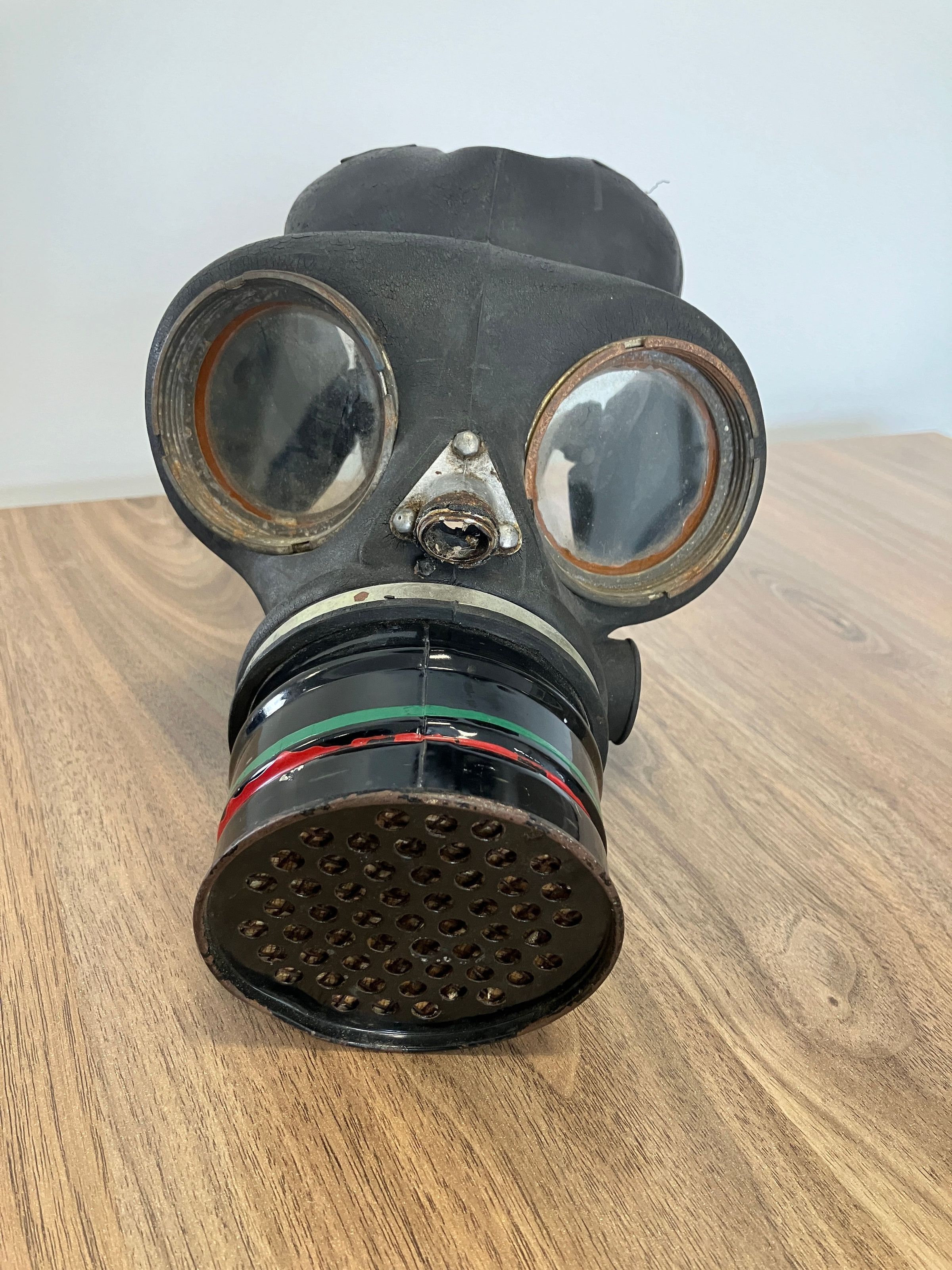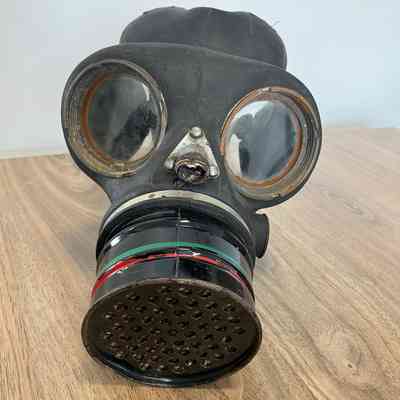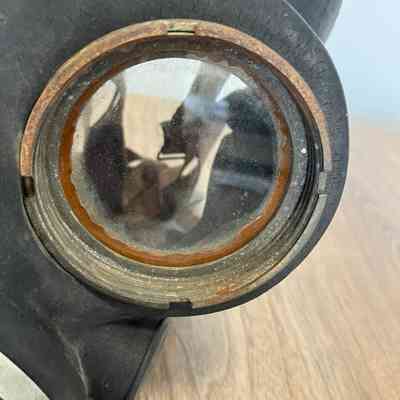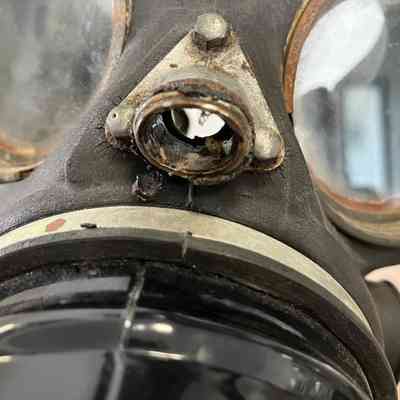Air Raid Warden (Civilian Duty) Gas Mask

2023.208
ARP gas mask showing filter, flapper outlet (missing rubber attachment) and glass eyepieces
Name/Title
Air Raid Warden (Civilian Duty) Gas MaskEntry/Object ID
2023.208Description
Respirator with canister: black rubber mask with round glass eyepieces in metal surrounds; rubber attachment on exhale flapper valve missing; cylindrical canister inserted into opening and sealed with metal clip ring; cylinder is painted black with thin green and red stripes around it, towards the front; black elastic harness.Use
Officially, the Civilian Duty was designed for members of civil air raid precautions services and others who might be called upon to carry out their normal duties in the presence of gas, but who are not likely to be continuously exposed to the highest concentrations. The rubber mask of the CD was of stout design compared to the British General Civilian Respirator, due to the conditions in which it was expected to be deployed. It was molded of much thicker rubber which was the basis for its robustness. The thicker, higher quality rubber allowed the CD to be cleaned by harsher disinfection solutions compared to the GCR - this is noted in many ARP manuals. The facepiece was produced in two sizes: Normal and Small. Internally, the rubber mask features a singular extension of rubber which appears centrally above the eyepiece assemblies which served as structural support for the mask. Externally, the rubber mask was moulded with a portion of rubber that served as a mount for a triangular plate that held the flapper valve. This plate was held in place by 3 bolts. The prospect of using telecommunications equipment whilst under the threat of gas could not be ignored, thus a cylindrical rubber protrusion was molded with each rubber mask. Should a CD respirator require equipping with a microphone and headset, the protrusion could be cut off to allow access for such equipment. The telephonist variants began around 1938. The headharness used on the CD respirator was the No. 4 Mk. III. This harness consisted of 3 strips of elasticated webbing, each 19 mm (3/4 inch) wide, 457 mm (18 inches) long. Each strip was threaded through slots in the back of the rubberized head-pad, known as a "tag", to form six ends that attached to the buckles on the facepiece. Vision was provided by two eyepiece assemblies consisting of an outer rim, orange rubber gasket, glass eyepiece disc and an inner rim. The inner rim was designed to be unscrewed by means of a special tool ('Key, securing, eyepiece'). The ability to disassemble was advantageous for 2 reasons, firstly, any damage pieces could be easily replaced, secondly, it made decontamination easier. Filter C.D. Mark III - This is the filter most Civilian Duty masks are found with. It is made of the same lacquered metal as the Mark II but is slightly larger. The Mark III did not require an absorbent pad as the Mark III came with a intake valve that could be removed and disinfected separately, thus ensuring the filters internals were not disturbed during decontamination. It is often seen with a red band painted on, to denote that the filter was for a Civilian Duty. It was important to differentiate between filters intended for CD masks as they contained charcoal with a higher activation than filters intended for the General Civilian Respirator. A green band indicated resin-impregnated wool rather than asbestos-wool. C.D. Mark III filters can be further split into two other variants: 'Mark IIIA' and 'Mark IIIB' - the significance of the A & B designations is unknown. Usually when there is just a solid green ring on the filter, it meant the person who owned it had asthma or worked in an industrial area.Category
Equipment, Personal Effects, War Memorabilia



